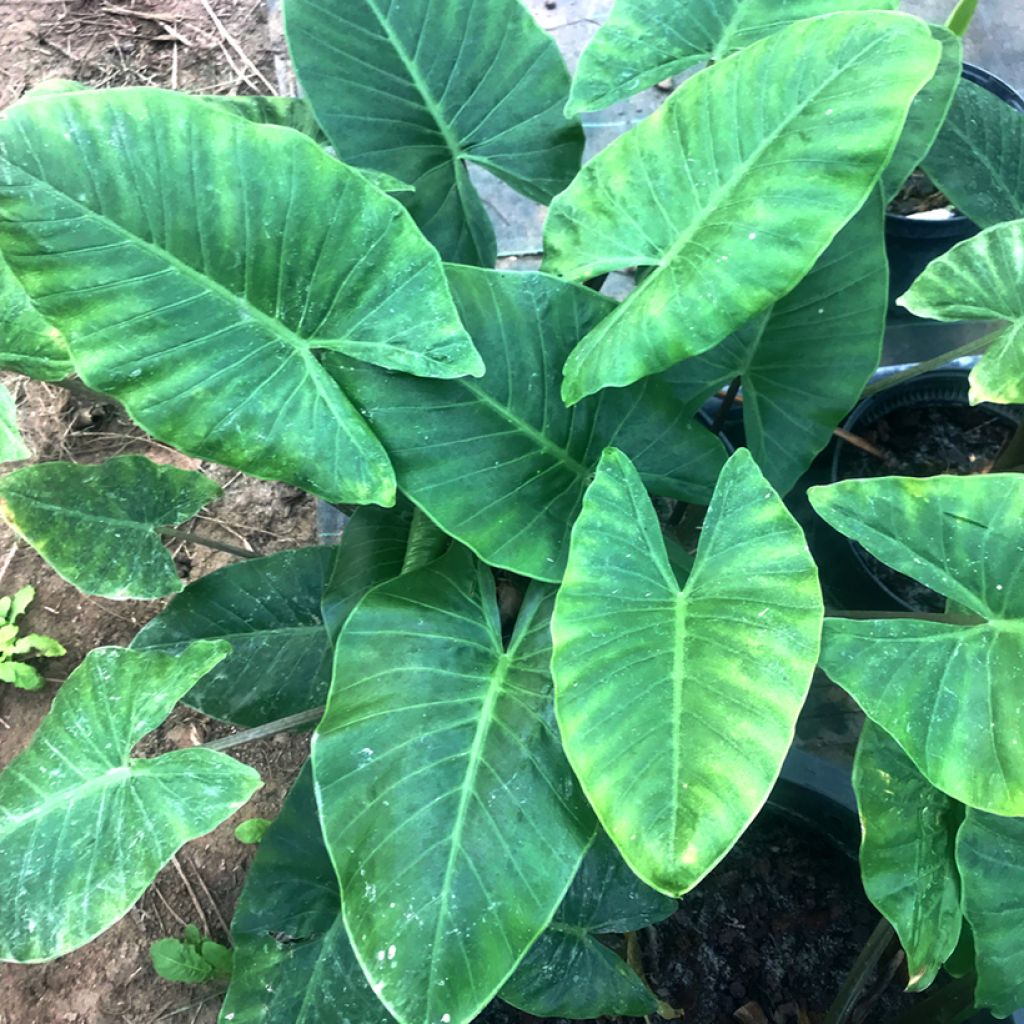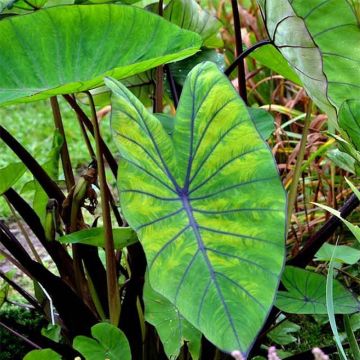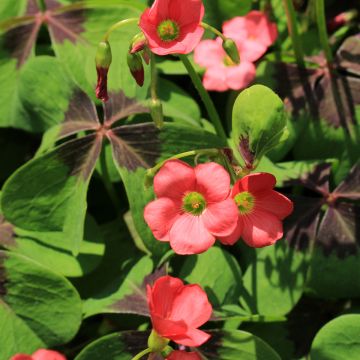Shipping country and language
Your country of residence may be:
Your country of residence is:
For a better user experience on our website, you can select:
Your shipping country:
Andorra
Austria
Belgium
Bulgaria
Canada
Chile
Croatia
Cyprus
Czechia
Denmark
Estonia
Finland
France
Germany
Greece
Hungary
Iceland
Ireland
Italy
Latvia
Lithuania
Luxembourg
Malta
Monaco
Netherlands
Poland
Portugal
Romania
Slovakia
Slovenia
Spain
Sweden
Switzerland
United Kingdom
We only deliver seed and bulb products to your country. If you add other products to your basket, they cannot be shipped.
Language:
French
German
Spanish
English
My Account
Hello
My wish lists
Plantfit
Log in / Register
Existing customer?
New customer?
Create an account to track your orders, access our customer service and, if you wish, make the most of our upcoming offers.


Alocasia cucullata - Chinese Taro
Alocasia cucullata - Chinese Taro
Alocasia cucullata
Chinese Taro
Order in the next for dispatch today!
Dispatch by letter from €3.90.
Delivery charge from €5.90 Oversize package delivery charge from €6.90.
More information
This item is not available in your country.
Schedule delivery date,
and select date in basket
This plant carries a 12 months recovery warranty
More information
We guarantee the quality of our plants for a full growing cycle, and will replace at our expense any plant that fails to recover under normal climatic and planting conditions.
From €5.90 for pickup delivery and €6.90 for home delivery
Express home delivery from €8.90.
Does this plant fit my garden?
Set up your Plantfit profile →
Description
The Alocasia cucullata is distinguished by its upright habit with slender stems and its compact growth. This plant, with its exotic appearance, nicknamed 'Elephant's Ear', will find its place in a flowerbed or a large pot. Its large heart-shaped leaves of a beautiful shiny green are very decorative. It is a rhizomatous perennial not very hardy (up to -7°C), to be grown in a bright and warm interior, in a pot to be stored in winter or in open ground in mild climates.
Native to India, China and Sri Lanka, the Alocasia cucullata is a rhizomatous perennial plant related to Arums, from the same family as araceae. This species grows in tropical forests populated by tall trees and bathed in a humid atmosphere. It is a perennial herbaceous plant that develops from a tuberous rhizome. It forms an upright clump that can reach 1m in height. Its upright stems bear large heart-shaped leaves, of an elegant fresh green. The inflorescence consists of a green spathe and a yellow-green spadix. It is quite rare and only appears late in cultivation, on mature plants, between June and September. This is followed by red berries when ripe.
The Alocasia cucullata is not very hardy. Its cultivation in open ground will be reserved for the mildest climates without forgetting a thick layer of mulch in winter to protect its stump. Elsewhere, it is preferable to grow it in a container and store it in a conservatory in winter. It is also an excellent indoor plant to place in a bright room, not too heated, without direct sunlight. In the garden, this exotic plant will bring a pleasantly exotic touch to a flowerbed. Install it in a semi-shaded area, associated with a banana tree with pink flowers (Musa velutina) and a Canna 'Felix Roux' to add a touch of color. This lover of moist soil will find its place on the banks of a water feature in the company of Iris ensata 'Darling' and Juncus effusus 'Spiralis'.
Flowering
Foliage
Plant habit
Safety measures
Botanical data
Alocasia
cucullata
Araceae
Chinese Taro
Arum cucullatum, Caladium cucullatum
Southeast Asia
atteintescutaneomuqueuses
Cette plante peut provoquer l'apparition de réactions cutanées indésirables, une atteinte des yeux, ou des difficultés respiratoires si elle est ingérée.
Ne la plantez pas là où de jeunes enfants peuvent évoluer. Evitez tout contact avec la peau: privilégiez l'emploi de gants pour la manipuler. En cas de contact, lavez-vous soigneusement les mains et rincez abondamment à l'eau la zone concernée. Lavez les vêtements entrés en contact. En cas de réaction cutanée, contactez votre médecin ou le centre antipoison le plus proche de chez vous. En cas d'atteinte étendue ou de difficultés respiratoires, appelez immédiatement le 15 ou le 112.Pensez à conserver l'étiquette de la plante, à la photographier ou à noter son nom, afin de faciliter le travail des professionnels de santé.
Davantage d'informations sur https://plantes-risque.info
Other Other summer bulbs
Planting and care
Alocasia cucullata is a not very hardy plant (up to -7°C). It can be grown in the ground in mild climate regions, especially near the sea. Everywhere else, cultivate it in a pot to bring it indoors in a greenhouse or conservatory during winter. It is also an indoor plant that likes bright exposures, but without direct sunlight. It thrives in partial shade in a humus-bearing, fertile, well-draining, moist to wet, even very wet, but not waterlogged soil. In the ground, only plant it once the risk of frost has passed and make sure to protect the plant's rhizomatous stump with a good layer of mulch during winter. The foliage may completely disappear, but the plant should regrow from the stump as soon as the warmer days return. If the soil is waterlogged in winter, the rhizome may rot, so the soil will need to be drained. Watch out for slugs and snails that enjoy feasting on its young leaves.
In a pot, be vigilant with watering, which should be frequent and abundant during the growing season and reduced in winter (but not nonexistent). Don't hesitate to regularly provide it with nitrogen fertilizer. Grass clippings are perfectly suitable. If the atmosphere is too dry in winter, the plants may be attacked by scale insects and red spiders.
Planting period
Intended location
Care
This item has not been reviewed yet - be the first to leave a review about it.
Haven't found what you were looking for?
Hardiness is the lowest winter temperature a plant can endure without suffering serious damage or even dying. However, hardiness is affected by location (a sheltered area, such as a patio), protection (winter cover) and soil type (hardiness is improved by well-drained soil).

Photo Sharing Terms & Conditions
In order to encourage gardeners to interact and share their experiences, Promesse de fleurs offers various media enabling content to be uploaded onto its Site - in particular via the ‘Photo sharing’ module.
The User agrees to refrain from:
- Posting any content that is illegal, prejudicial, insulting, racist, inciteful to hatred, revisionist, contrary to public decency, that infringes on privacy or on the privacy rights of third parties, in particular the publicity rights of persons and goods, intellectual property rights, or the right to privacy.
- Submitting content on behalf of a third party;
- Impersonate the identity of a third party and/or publish any personal information about a third party;
In general, the User undertakes to refrain from any unethical behaviour.
All Content (in particular text, comments, files, images, photos, videos, creative works, etc.), which may be subject to property or intellectual property rights, image or other private rights, shall remain the property of the User, subject to the limited rights granted by the terms of the licence granted by Promesse de fleurs as stated below. Users are at liberty to publish or not to publish such Content on the Site, notably via the ‘Photo Sharing’ facility, and accept that this Content shall be made public and freely accessible, notably on the Internet.
Users further acknowledge, undertake to have ,and guarantee that they hold all necessary rights and permissions to publish such material on the Site, in particular with regard to the legislation in force pertaining to any privacy, property, intellectual property, image, or contractual rights, or rights of any other nature. By publishing such Content on the Site, Users acknowledge accepting full liability as publishers of the Content within the meaning of the law, and grant Promesse de fleurs, free of charge, an inclusive, worldwide licence for the said Content for the entire duration of its publication, including all reproduction, representation, up/downloading, displaying, performing, transmission, and storage rights.
Users also grant permission for their name to be linked to the Content and accept that this link may not always be made available.
By engaging in posting material, Users consent to their Content becoming automatically accessible on the Internet, in particular on other sites and/or blogs and/or web pages of the Promesse de fleurs site, including in particular social pages and the Promesse de fleurs catalogue.
Users may secure the removal of entrusted content free of charge by issuing a simple request via our contact form.
The flowering period indicated on our website applies to countries and regions located in USDA zone 8 (France, the United Kingdom, Ireland, the Netherlands, etc.)
It will vary according to where you live:
- In zones 9 to 10 (Italy, Spain, Greece, etc.), flowering will occur about 2 to 4 weeks earlier.
- In zones 6 to 7 (Germany, Poland, Slovenia, and lower mountainous regions), flowering will be delayed by 2 to 3 weeks.
- In zone 5 (Central Europe, Scandinavia), blooming will be delayed by 3 to 5 weeks.
In temperate climates, pruning of spring-flowering shrubs (forsythia, spireas, etc.) should be done just after flowering.
Pruning of summer-flowering shrubs (Indian Lilac, Perovskia, etc.) can be done in winter or spring.
In cold regions as well as with frost-sensitive plants, avoid pruning too early when severe frosts may still occur.
The planting period indicated on our website applies to countries and regions located in USDA zone 8 (France, United Kingdom, Ireland, Netherlands).
It will vary according to where you live:
- In Mediterranean zones (Marseille, Madrid, Milan, etc.), autumn and winter are the best planting periods.
- In continental zones (Strasbourg, Munich, Vienna, etc.), delay planting by 2 to 3 weeks in spring and bring it forward by 2 to 4 weeks in autumn.
- In mountainous regions (the Alps, Pyrenees, Carpathians, etc.), it is best to plant in late spring (May-June) or late summer (August-September).
The harvesting period indicated on our website applies to countries and regions in USDA zone 8 (France, England, Ireland, the Netherlands).
In colder areas (Scandinavia, Poland, Austria...) fruit and vegetable harvests are likely to be delayed by 3-4 weeks.
In warmer areas (Italy, Spain, Greece, etc.), harvesting will probably take place earlier, depending on weather conditions.
The sowing periods indicated on our website apply to countries and regions within USDA Zone 8 (France, UK, Ireland, Netherlands).
In colder areas (Scandinavia, Poland, Austria...), delay any outdoor sowing by 3-4 weeks, or sow under glass.
In warmer climes (Italy, Spain, Greece, etc.), bring outdoor sowing forward by a few weeks.




